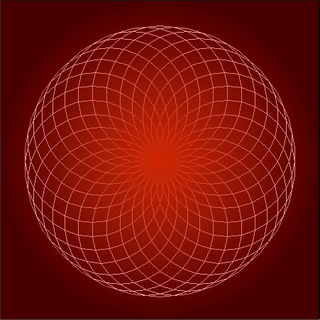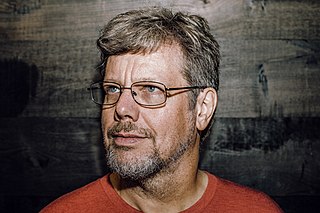
Logo is an educational programming language, designed in 1967 by Wally Feurzeig, Seymour Papert, and Cynthia Solomon. Logo is not an acronym: the name was coined by Feurzeig while he was at Bolt, Beranek and Newman, and derives from the Greek logos, meaning word or thought.
ABC is an imperative general-purpose programming language and programming environment developed at CWI, Netherlands by Leo Geurts, Lambert Meertens, and Steven Pemberton. It is interactive, structured, high-level, and intended to be used instead of BASIC, Pascal, or AWK. It is not meant to be a systems-programming language but is intended for teaching or prototyping.
In computer graphics, turtle graphics are vector graphics using a relative cursor upon a Cartesian plane. Turtle graphics is a key feature of the Logo programming language.

Guido van Rossum is a Dutch programmer best known as the author of the Python programming language, for which he was the "Benevolent dictator for life" (BDFL) until he stepped down from the position in July 2018.
A standard library in computer programming is the library made available across implementations of a programming language. These libraries are conventionally described in programming language specifications; however, contents of a language's associated library may also be determined by more informal practices of a language's community.
The Rur is a river in Belgium, Germany and the Netherlands.

In computing, a visual programming language (VPL) is any programming language that lets users create programs by manipulating program elements graphically rather than by specifying them textually. A VPL allows programming with visual expressions, spatial arrangements of text and graphic symbols, used either as elements of syntax or secondary notation. For example, many VPLs are based on the idea of "boxes and arrows", where boxes or other screen objects are treated as entities, connected by arrows, lines or arcs which represent relations.

Grail was a free extensible multi-platform web browser written in the Python programming language. The project was started in August 1995, with its first public release in November of that year. The last official release was version 0.6 in 1999.

Karel is an educational programming language for beginners, created by Richard E. Pattis in his book Karel The Robot: A Gentle Introduction to the Art of Programming. Pattis used the language in his courses at Stanford University, California. The language is named after Karel Čapek, a Czech writer who introduced the word robot.
RoboMind is a simple educational programming environment with its own scripting language that allows beginners to learn the basics of computer science by programming a simulated robot. In addition to introducing common programming techniques, it also aims at offering insights in robotics and artificial intelligence. RoboMind is available as stand-alone application for Windows, Linux and Mac OS X. It was first released in 2005 and was originally developed by Arvid Halma, a student of the University of Amsterdam at that time. Since 2011 RoboMind is published by Research Kitchen.

IDLE is an integrated development environment for Python, which has been bundled with the default implementation of the language since 1.5.2b1. It is packaged as an optional part of the Python packaging with many Linux distributions. It is completely written in Python and the Tkinter GUI toolkit.
Benevolent dictator for life (BDFL) is a title given to a small number of open-source software development leaders, typically project founders who retain the final say in disputes or arguments within the community. The phrase originated in 1995 with reference to Guido van Rossum, creator of the Python programming language,. Shortly after Van Rossum joined the Corporation for National Research Initiatives, the term appeared in a follow-up mail by Ken Manheimer to a meeting trying to create a semi-formal group that would oversee Python development and workshops; this initial use included an additional joke of naming Van Rossum the "First Interim BDFL". Van Rossum announced on July 12, 2018, that he would be stepping down as BDFL of Python.
The programming language Python was conceived in the late 1980s, and its implementation was started in December 1989 by Guido van Rossum at CWI in the Netherlands as a successor to ABC capable of exception handling and interfacing with the Amoeba operating system. Van Rossum is Python's principal author, and his continuing central role in deciding the direction of Python is reflected in the title given to him by the Python community, Benevolent Dictator for Life (BDFL). Python was named for the BBC TV show Monty Python's Flying Circus.

Anaconda is a free and open-source distribution of the Python and R programming languages for scientific computing, that aims to simplify package management and deployment. Package versions are managed by the package management system conda. The Anaconda distribution is used by over 13 million users and includes more than 1400 popular data-science packages suitable for Windows, Linux, and MacOS.

Salvius is the first open source humanoid robot to be built in the United States. Introduced in 2008, Salvius, whose name is derived from the word 'salvaged', has been constructed with an emphasis on using recycled components and materials to reduce the costs of designing and construction. The robot is designed to be able to perform a wide range of tasks by having a body structure that is similar to that of a human. The primary goal for Salvius is to create a robot that can function dynamically in a domestic environment.








